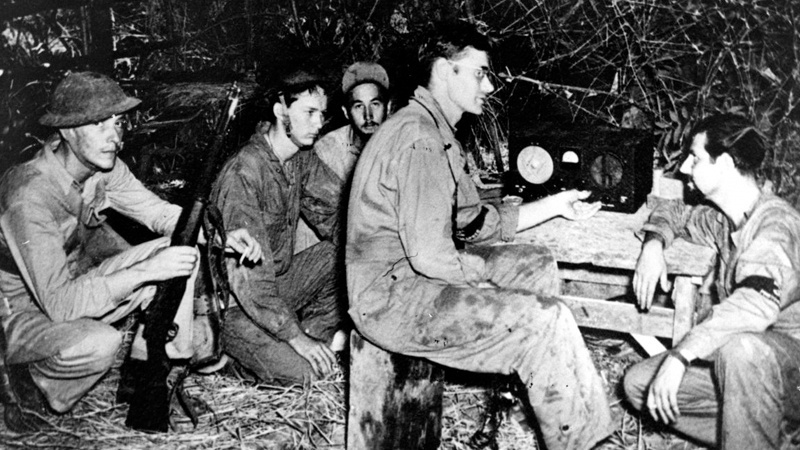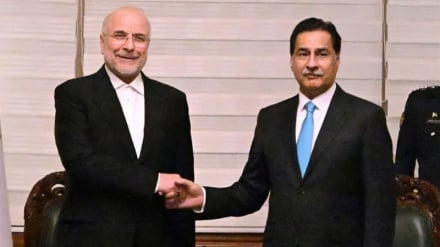The dark legacy of U.S. in the Philippines: Stateless children, forgotten victims
-

An image of U.S. soldiers at the Naval Base in Mariveles on the Bataan Peninsula in the Philippines – April 1942
Pars Today – The long-standing presence of the U.S. military in the Philippines is not just a reminder of military ties and political agreements; it has also left a bitter legacy of thousands of stateless children, born as a result of illicit relationships between American soldiers and Filipino women.
For years, a population in the Philippines—born from illicit relationships between American soldiers and Filipino women—has struggled amid neglect and discrimination, victims who belong neither in their motherland nor are accepted in their paternal homeland. In this Pars Today news feature, we take a closer look at the U.S. presence and crimes in the Asian country of the Philippines, as you will read below:
A past that was never forgotten
Three decades ago, the Philippines decided to end nearly a century of U.S. military presence. American warships left the Subic Bay and Clark bases, and the stars-and-stripes flag was lowered. But what remained was not just empty buildings; tens of thousands of stateless children—born from fleeting and often degrading relationships between American soldiers and local women—were left behind. These children were the product of occupation and exploitation that never found a place in Washington’s diplomatic calculations. Filipino society came to know them as the “children abandoned by the ships”—a generation without a future, struggling with racial discrimination and poverty.
The fate of “Amerasians”: From childhood to adulthood
A poignant example of this bitter reality can be seen in the life of Carwin Levante. He spent his childhood in the shadow of Subic Naval Base and began selling goods on the streets at the age of seven just to survive. Today, at 45, he still suffers from statelessness—an identity that neither the Philippine nor the U.S. government is willing to recognize.
According to a 2013 study, most of these children faced discrimination and deprivation from the moment they were born. Many do not even have valid identification documents, and due to social discrimination, their access to educational and employment opportunities has always been severely limited.
Discriminatory U.S. laws and the exclusion of Filipinos
In 1982, the U.S. Congress passed a law known as the “Amerasian” Act, allowing the children of American soldiers and local women in Vietnam, South Korea, Thailand, Laos, and Cambodia to immigrate to the United States. However, in a clear and discriminatory move, the Philippines was excluded from this law.
This neglect continued despite repeated legal challenges and advocacy efforts. Even in the 1990s, thousands of Filipino children filed lawsuits against the U.S. government seeking compensation and recognition of their rights, but no results were achieved. Ultimately, the U.S. assumed no responsibility for this generation, and the Philippines, preoccupied with its domestic problems, turned a blind eye to their plight.
The return of U.S. bases: A recurring nightmare
Despite the official withdrawal of American forces in 1992, Washington has once again returned to the Philippines under new security agreements, citing the need to counter China. These new accords increase U.S. military access to Philippine bases.
This return has revived many concerns: Will history repeat itself? Will another generation of stateless children fall victim to illicit relationships and neglect? For the older “Amerasians,” the return of American ships serves as a reminder of a painful past—a past whose wounds have yet to heal.
The dream of U.S. citizenship: A promise that was never fulfilled
For many of these children, their only hope was to gain U.S. citizenship—a distant dream that could have offered an escape from poverty and discrimination. Yet the United States never recognized this right for the children of the Philippines. While the “Amerasian” law remains in effect for other countries, Filipinos continue to be excluded.
This discrimination once again exposes the true nature of U.S. foreign policy: the instrumental use of countries and their people to serve military and political interests, without accepting any responsibility for the human consequences.
The Philippines: A pawn in America’s geopolitical chess
From Washington’s perspective, the Philippines is not viewed as a human partner but merely as a geopolitical pawn against China. Its geographic location near Taiwan has made it a key base for U.S. military plans. Frequent visits by American officials to Manila and the signing of new defense agreements indicate that Washington still sees its military presence in the Philippines as a deterrent tool against China.
Yet in this equation, there is no place for the fate of the “Amerasians” or the rights of the Filipino people.
The legacy of the U.S. military in the Philippines is not limited to bases, security agreements, or joint exercises. Tens of thousands of stateless children remain victims who were never accounted for in Washington’s official calculations. They are living evidence of America’s intervention and crimes in the Philippines—a generation whose past is uncertain and whose future remains unimaginable.
Today, as the U.S. returns to the Philippines under new pretexts, the fundamental question arises: Will history repeat itself, and will another generation of children fall victim to hidden relationships and blatant irresponsibility?


